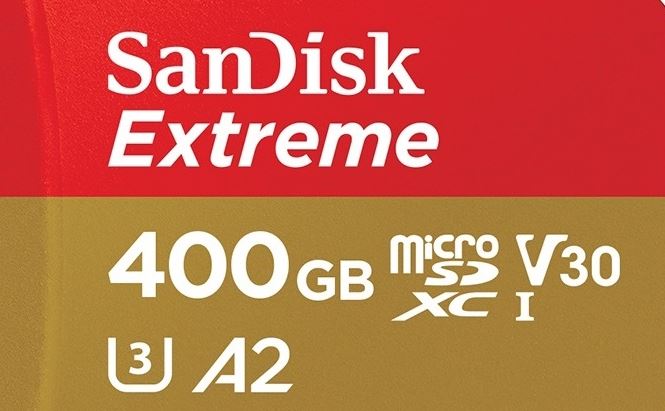SanDisk Extreme memory cards with App Performance Class 2 | |

| |
 The Japanese division of Western Digital Corporation presented its first memory cards in the form factor microSD that meet the requirements of the specification Application Performance Class 2 (A2). The new SanDisk Extreme cards are designed primarily for smartphones, so they do not provide very high sequential read/write speed, but according to A2 requirements offer quite high performance at random read and write operations. Therefore, these cards are better suited for running applications than previous generation A1 products. Sales of new products will begin tomorrow. The new SanDisk Extreme microSD cards have 32, 64, 128, 256, and 400 GB of capacity with the A2 nameplate and capabilities. The devices use the UHS-I bus, their sequential read speed reaches 90 MB / s, the sequential write speed - up to 60-70 MB/s (32 and 64 GB versions are slightly slower than the others). In addition, in accordance with the requirements of the video Speed Class 30 specification, the cards support a recording speed of at least 30 MB/s. More importantly, according to A2 specifications, the performance of new SanDisk Extreme microSD cards in random read operations is at least 4000 IOPS, and the write performance is 2000 IOPS (versus 1500/500 IOPS for A1 standard). Unfortunately, Western Digital does not publish real speed characteristics of this type of cards for arbitrary read/write operations. However, depending on the capabilities of the controller and memory used, the actual performance may be a multiple of the A2 specification. Speaking about the standard, it should be noted that in addition to the minimum performance levels, it requires the support of hardware command Queuing (with a minimum queue depth of 2 commands and a maximum queue depth of 32 commands), optimization of random reading performance, caching (apparently, to achieve the declared speed characteristics), as well as the possibility of its own prevention. The SD Association has developed application Performance Class 2 (A2) specifications primarily to improve the performance of applications installed on microSD-type memory cards. By the way, the latest versions of Android allow users to install applications only on microSD with identifiers A1 and A2. With increased speeds, new class A2 cards will be better suited for applications that perform many read/write operations than class A1 devices. Meanwhile, like their predecessors available today, the new SanDisk Extreme cards are compatible with the UHS Speed Class 3 and Video Speed Class 30 specifications, while providing a sequential recording speed of at least 30 MB/s and simultaneous recording of up to eight different files, which makes sense for both 360° video and multiple high-quality images taken simultaneously in Ultra HD resolution. Since in addition to smartphones, the new SanDisk Extreme cards can be used in unmanned aerial vehicles (which often operate in difficult conditions), they are designed to operate in the temperature range from -25 ºC to 85 ºC. Traditionally, SanDisk Extreme microSD cards come with SanDisk Memory Zone (file organization and backup for Android devices) and RescuePRO (simplifies recovery of accidentally deleted files) applications. Western Digital Japan plans to start selling its SanDisk Extreme microSD cards with Application Performance Class 2 (A2) support on October 12. It is not yet known when these cards will enter other markets, but, apparently, it will happen in the near future. It should be noted that Western Digital is the first company to start selling memory cards with A2 support. | |
| Category: Technology | Views: 844 | | |
| Total comments: 0 | |